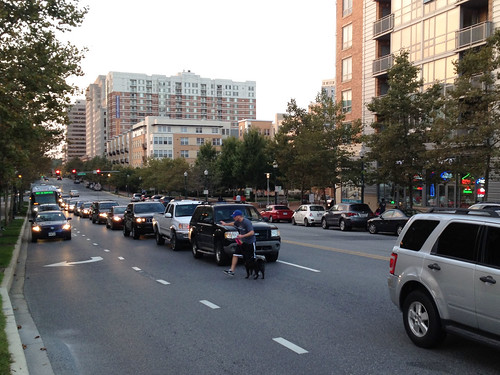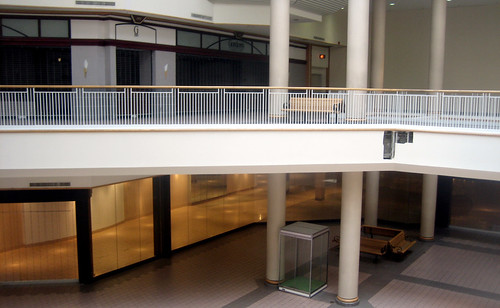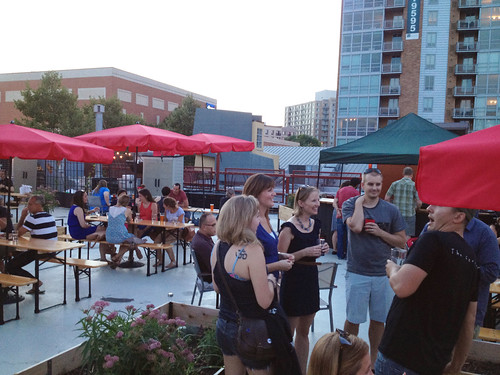When I moved to East-West Highway in South Silver Spring last fall, I quickly noticed one thing: people cross the street without using crosswalks all the time. Even as the surrounding area becomes more urban and walkable, this street remains a relic of its industrial, car-oriented past.
East-West Highway was built in the 1920s to connect Bethesda and Silver Spring and provide an alternative to Military Road in the District. (An extension to Prince George's County came later.) Industrial uses like bottling plants, commercial bakeries, and repair shops sprouted up along the road in Silver Spring. When the Blairs complex was built in the 1950s, the developers purposefully faced it away from East-West Highway because it was so unattractive.
When the redevelopment of downtown Silver Spring took off about 10 years ago, those buildings gave way to apartments and condominiums. More recently, businesses including Denizens Brewing Company, Bump 'N Grind, a coffeeshop/record store, and Scion, a restaurant based in Dupont Circle, have flocked to the area.
South Silver Spring is now one of the region's youngest neighborhoods, with a large number of transit commuters. Even the owner of the Blairs is embarking on a redevelopment plan to face the street again.
As Silver Spring redeveloped, it became more walkable. But East-West Highway never caught up.
 |
| Drivers stop to let a man and his dog cross East-West Highway. All photos by the author. |
East-West Highway was built in the 1920s to connect Bethesda and Silver Spring and provide an alternative to Military Road in the District. (An extension to Prince George's County came later.) Industrial uses like bottling plants, commercial bakeries, and repair shops sprouted up along the road in Silver Spring. When the Blairs complex was built in the 1950s, the developers purposefully faced it away from East-West Highway because it was so unattractive.
When the redevelopment of downtown Silver Spring took off about 10 years ago, those buildings gave way to apartments and condominiums. More recently, businesses including Denizens Brewing Company, Bump 'N Grind, a coffeeshop/record store, and Scion, a restaurant based in Dupont Circle, have flocked to the area.
South Silver Spring is now one of the region's youngest neighborhoods, with a large number of transit commuters. Even the owner of the Blairs is embarking on a redevelopment plan to face the street again.
As Silver Spring redeveloped, it became more walkable. But East-West Highway never caught up.




